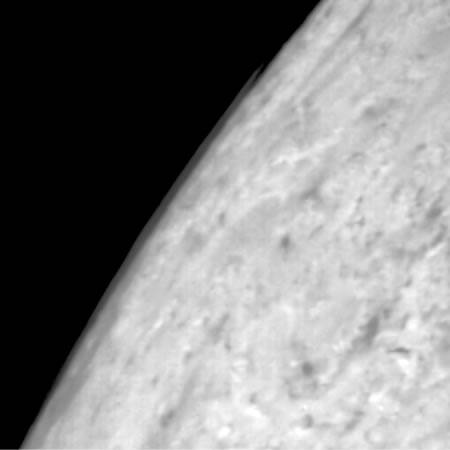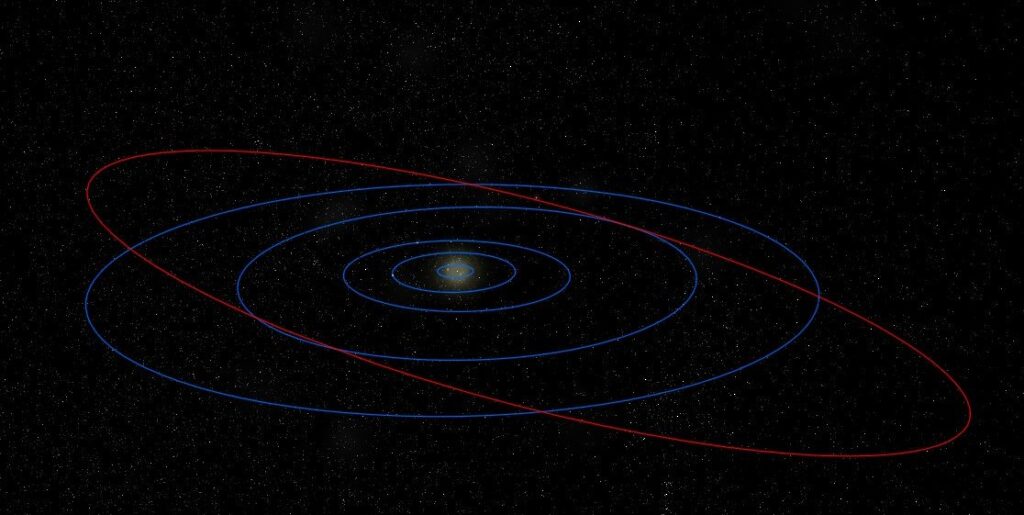Rather than covering developments in North Carolina’s climate, in this post, we’re looking a bit farther away. Specifically, more than three billion miles away on the distant dwarf planet Pluto, where it’s a bit colder and dimmer than in North Carolina, but still subject to its own local climate.
For many of us, Pluto is best known as the small object on the outskirts of the solar system that’s no longer classified as a planet. Frankly, many of Pluto’s details are still shrouded in mystery. It has taken scientists decades since Pluto’s discovery in 1930 to nail down the path of its orbit, its approximate mass and diameter, and the presence of a handful of moons circling it.
That will change in about a month when the New Horizons spacecraft flies past Pluto on July 14, giving us high-resolution data and images, good enough to pick out features the size of ponds in Central Park. It will also tell us more about Pluto’s atmosphere and climate.

Wait, Pluto has an atmosphere? And a climate?
Yes, astronomers already know that Pluto has an atmosphere, although it’s quite thin. The atmospheric pressure on Pluto is estimated at about 0.02 millibars — more than 50,000 times thinner than on Earth. Like on the Earth, though, Pluto’s atmosphere is made up primarily of nitrogen (N₂). It also includes methane and carbon monoxide. Those gases also freeze on the surface, forming frosts and ices.
It’s likely that Pluto has haze and clouds, as well as light winds at the surface. All three have been seen on Neptune’s large moon Triton, which is probably a captured Kuiper belt object and a close relative of Pluto.
Pluto also has a climate, and it can go through some fairly extreme changes thanks to its oblong orbit around the sun. When Pluto makes its closest approach to the sun — about 2.75 billion miles away, as it did most recently in 1989 — surface temperatures warm to a balmy -360°F. At those temperatures, the nitrogen and methane ices on the surface change directly from a solid to a gas, creating a thicker atmosphere.
As Pluto moves farther from the sun, as it’s doing now and will for much of the next half of its 248-year orbit, the atmosphere will cool down and freeze out, forming those nitrogen and methane ices on the surface.

So would one of Pluto’s freeze-outs rival an ice storm in North Carolina?
Stern and Trafton (2008) estimated that if all the nitrogen gas in Pluto’s atmosphere were condensed on the surface, it would create a layer of frost 0.5 to 10 millimeters thick, depending on the actual thickness of the atmosphere. That’s up to 0.4 inches of ice! Compared to our severe ice storms, which can give a quarter to a half inch of ice accumulation as we saw last winter, that’s a respectable amount coming from an exceedingly thin atmosphere.
Pluto’s latest freeze-out isn’t happening quite yet because of another similarity to Earth’s climate: a seasonal temperature lag. As we discussed for North Carolina last summer, our warmest temperatures generally come three to four weeks after the summer solstice, when we receive the most incoming solar radiation, since it takes time for absorbed radiation to get re-radiated back to space.
The same is true on Pluto, but on much longer timescales. Although it made its closest approach to the sun nearly 26 years ago, it’s actually still warming and its atmosphere is thickening. It’s unclear exactly when this process might reverse and when the freeze-out might happen, but some indications suggest that once it starts, it may happen quickly.
Although New Horizons isn’t waiting around for that to happen — it’s flying by at more than 8 miles per second — it should still give us insights about the atmosphere, frosts, and ices on Pluto.
And as the images and data continue streaming in from the small, faraway dwarf planet over the next few months, just remember any hazy day, bad ice storm, or hot July afternoon and realize that Pluto might not be so different from the Earth after all.
Sources:
- On the Atmospheres of Objects in the Kuiper Belt by Stern and Trafton (2008), from the book The Solar System Beyond Neptune
- Does Pluto’s atmosphere go through the fast-freeze? from the European Planetology Network